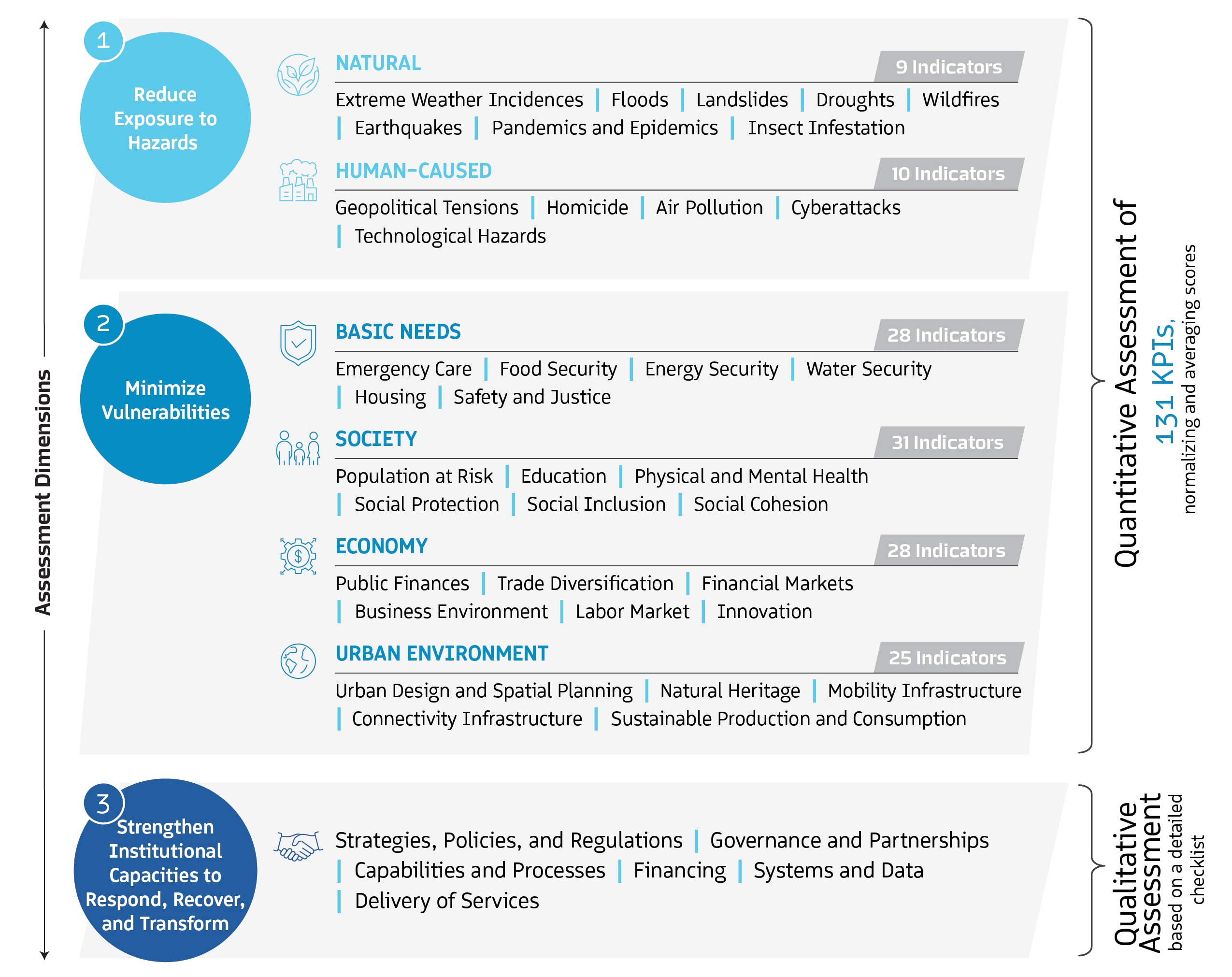{{item.title}}

Cities worldwide are placing resilience at the top of their agendas to better prepare for future disruptors, such as climate change, pandemics, AI and demographic shifts. What are the essential elements of a successful urban resilience strategy?
Urban resilience is the ability of cities to respond, recover, and transform in the face of shocks, stresses, and adversity.
Urban resilience is the ability of cities to respond, recover, and transform in the face of shocks, stresses, and adversity.
Our comprehensive and evidence-based framework enables cities to assess their exposure to hazards, their vulnerabilities, and their institutional capacity to respond, recover, and transform following a crisis. The result is a framework based on 131 key performance indicators (KPIs), a qualitative checklist and an interactive tool that cities can use to assess their resilience and identify the most important priorities to mitigate future threats. In our second edition of the Urban Resilience Index, the list of cities has been expanded from 20 to 50 cities.
Our analysis suggests that the different dimensions of resilience are interrelated; improvements in one area will trigger benefits in others. Yet the dimension with the biggest impact is innovation, which not only makes cities more economically vibrant and creates jobs, but also leads to corresponding gains in resilience as well. That is a powerful message for city leaders setting priorities among various initiatives: when in doubt, invest in innovation.
As the threats and potential shocks to cities grow, cities must become more resilient. That process starts with information—using our interactive tool to assess a city’s specific exposure, vulnerabilities, and capacity to respond, recover, and transform. Armed with that information, cities can start taking the most impactful steps to improve. Our evidence shows that significant improvements can be achieved within just a few years if cities don’t delay and focus on cohesive and innovative change programs.














Menu